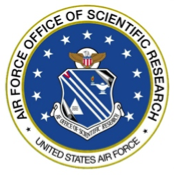Research
Scanning tunneling microscopy (STM), atomic force microscopy (AFM), and their variants have revolutionized our understanding of surface structure and, to some extent, dynamics at surfaces. Scanning electrochemical microscopy (SECM) is a powerful apparatus for imaging electrochemical phenomena at micrometer and larger scales. Extending the SECM into the nanometer domain will open many new avenues of research that will analogously revolutionize our understanding of several important technologies including advanced battery systems, the photocatalytic conversion of CO2 to hydrocarbon fuels, and the photocatalytic or electrocatalytic splitting of water.
The fundamental knowledge base for understanding heterogeneous electrode kinetics at the nanometer length scale does not exist. The primary reason for this is that it has not been possible to spatially resolve electron transfer dynamics on the appropriate length scale. The theoretical and experimental approaches developed through this MURI aim at rectifying this situation.
In order to address these issues, we have organized four research strategic groups:
- Computational Simulation and Modeling of Electron Transfer
- Development of the Nanoscale Imaging Electrochemical Microscope
- Nanopore Systems for Delivery of Single Molecules and Nanoparticles to Electrochemical Interfaces
- Multimodal Nanoscale Spectroelectrochemical Imaging


